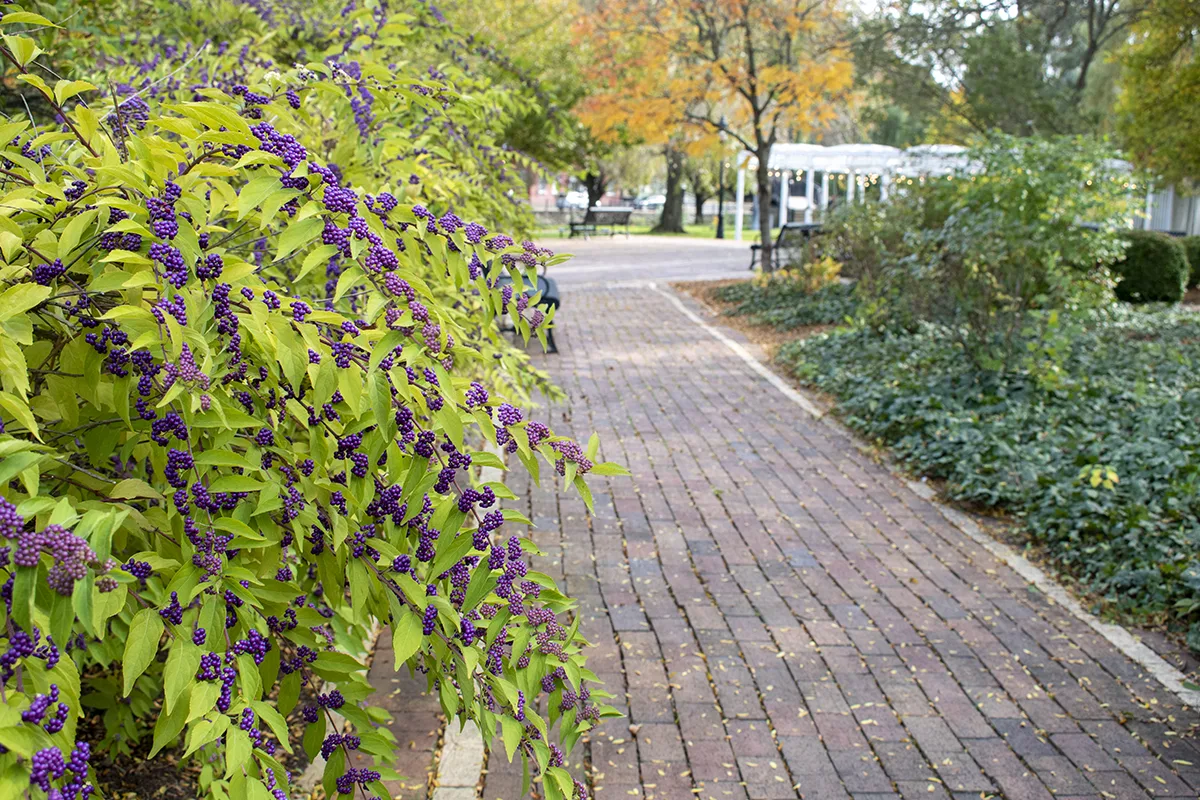
We have a beautiful park where I live. No, really, it’s quite something. My friends and I have a running joke where we will wager a guess as to how many engagement, pregnancy, Christmas card and family photo shoots will be happening each time we head to the park.
Stately willows are trailing their slender branches in the wide crystal-clear creek, and geese and ducks abound. You can peer down from the suspension bridge and see sleek brook trout resting in the aquatic plants below. But every fall, one plant always stops visitors to the park in their tracks.
The beautyberry bushes.
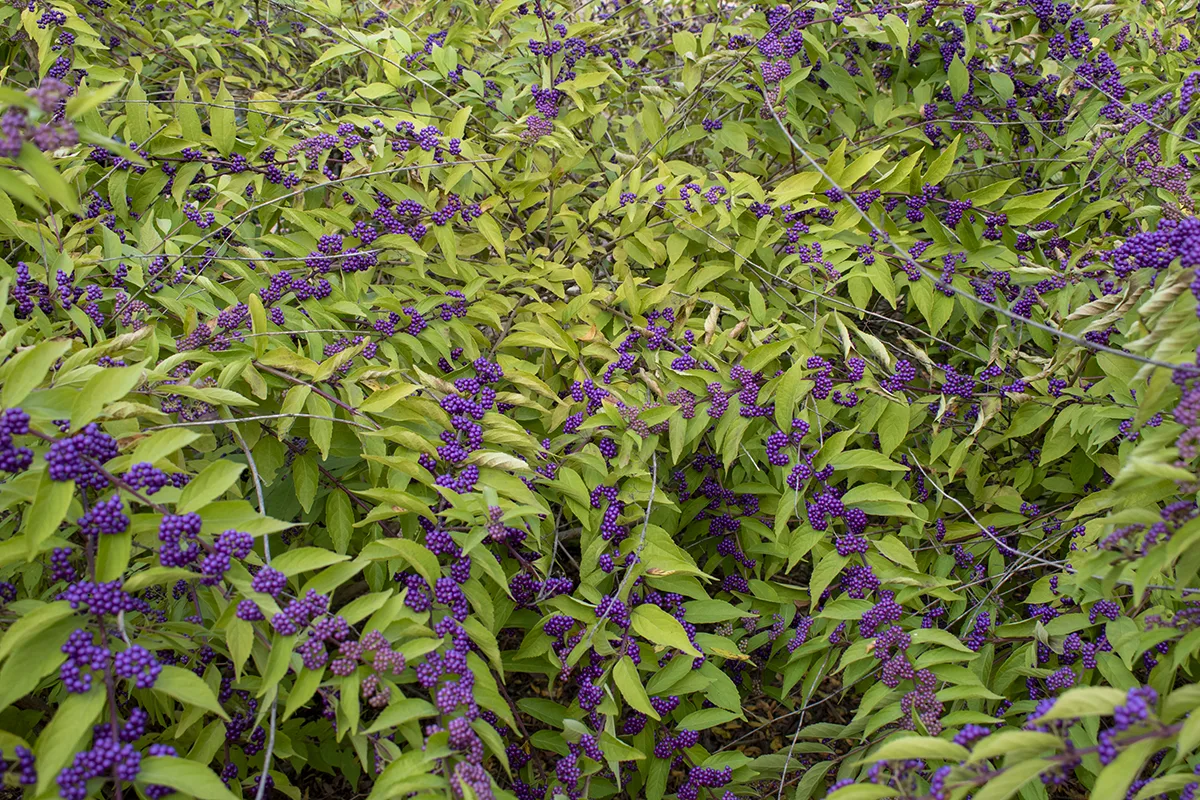
With their long branches full of bright green leaves and show-stopping clusters of tiny purple berries, it’s no wonder people stop to snap a photo and ‘ooh’ and ‘aah’ over them.
The beautyberry is a large shrub with lovely bright green leaves most of the year. It’s covered with small flowers you probably wouldn’t even notice during the summer. But the real appeal is the gorgeous shocking purple berries that arrive in the fall.
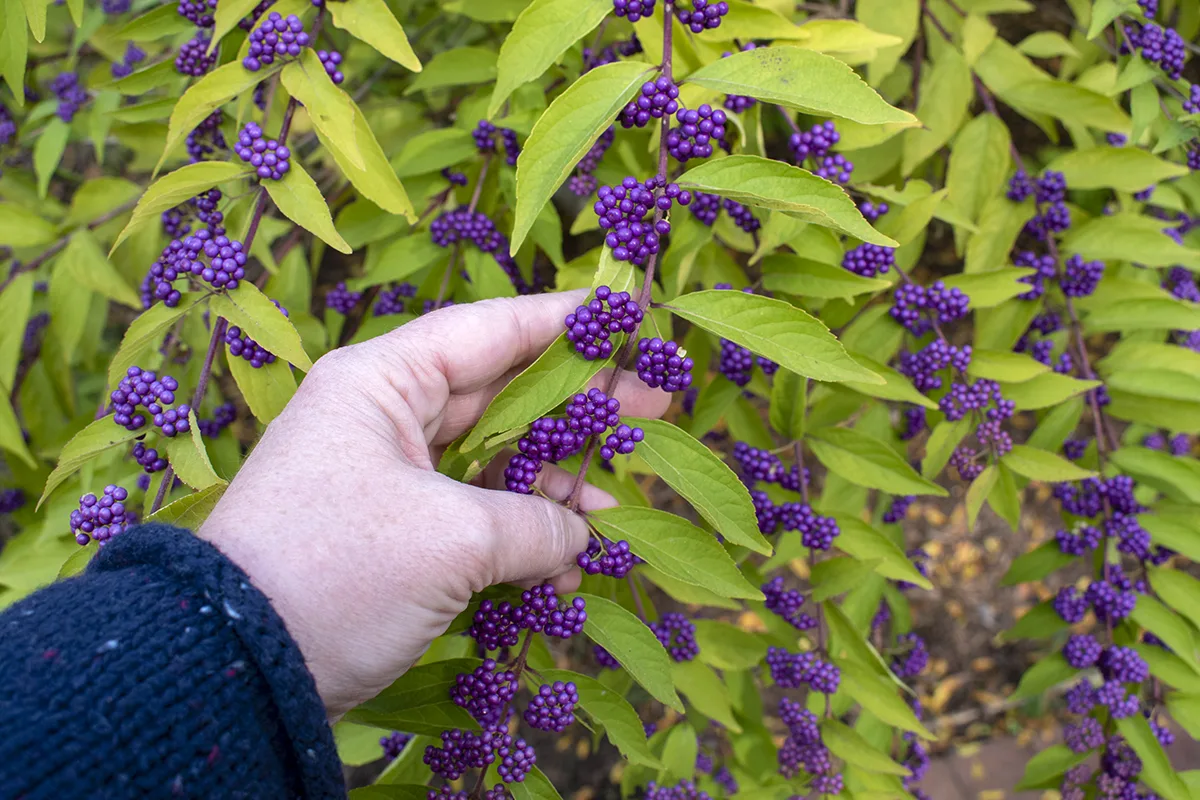
There is nothing else like them. Also known as French mulberry and Early Amethyst, this shrub isn’t just another decorative plant, though. There are some great reasons to add beautyberry to your landscape; eight great reasons, actually.
1. It’s Gorgeous
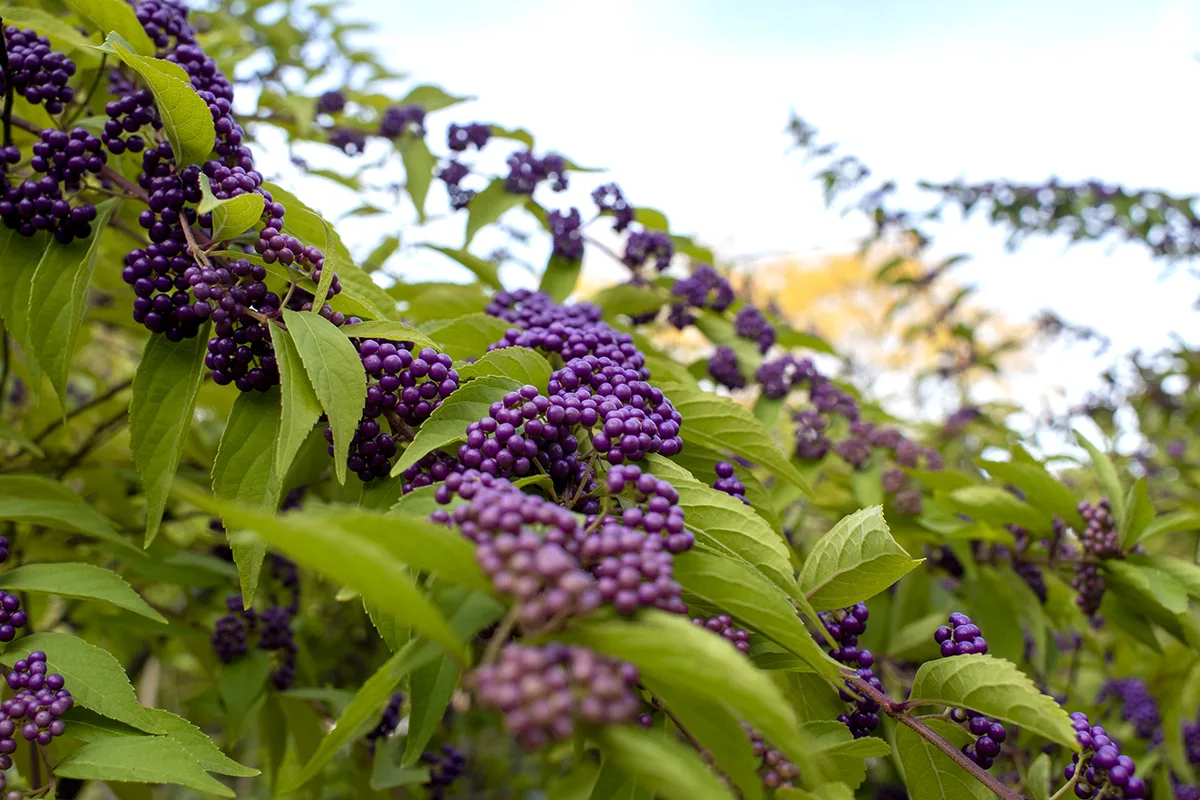
Okay, I know I just got done saying it’s not just another decorative plant, but to me, this is the most obvious reason to grow beautyberry. All of the other reasons are extras. This plant does stop people in their tracks when they see the berries for the first time.
Most purples that occur in nature are quite dark; think of eggplants and blackberries. They have an almost black appearance. The berries of beautyberry are such a lovely shade of purple, almost unique in nature; they make for an interesting and lovely addition to any landscape.
2. It’s a Tough Shrub That’s Easy to Grow
The beautyberry bush is surprisingly hardy, which is always a plus when considering new plants to add to your garden. It does well in many climates, growing in warmer areas like Florida and doing just as well up in New York.
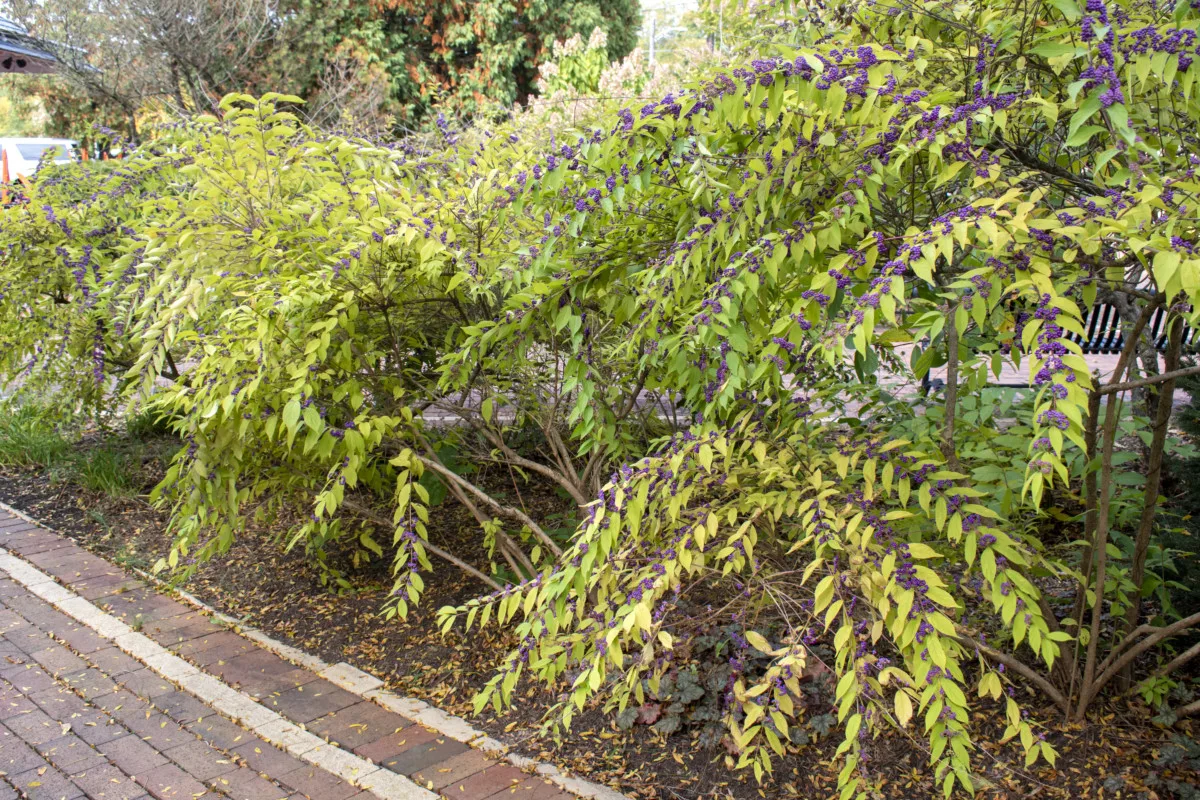
They do best in partial to full shade, making them a great choice for shady lawns or around the edge of wooded areas. Beautyberry is drought-tolerant and generally pest-free.
If you want an easy-to-care-for plant that makes a statement, look no further than the beautyberry.
3. It’s a Native Plant
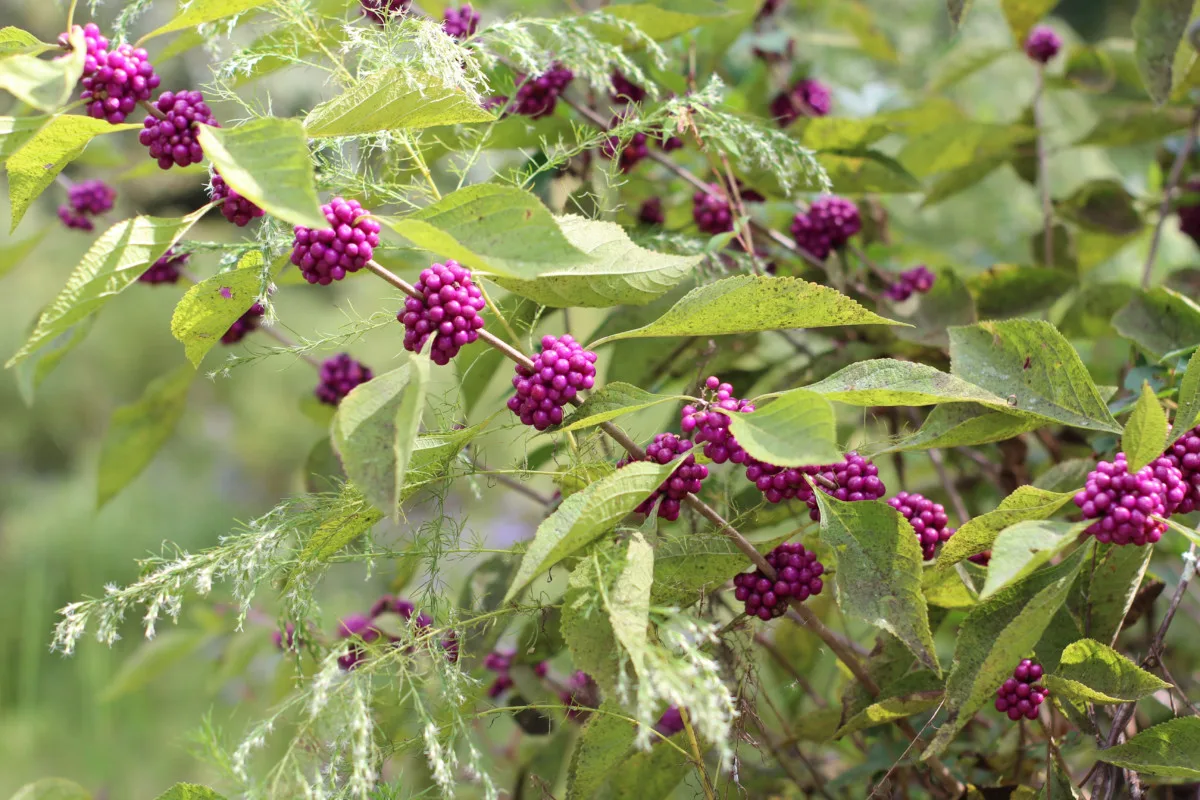
You will generally find two types of beautyberry in the states: North American beautyberry (Callicarpa americana) and Asian beautyberry (Callicarpa dichotoma). For those looking to plant more native species in their gardens, the North American beautyberry is a great choice.
More and more nurseries are carrying beautyberry, but if you’re looking for native beautyberry, you can easily tell them apart. The American beautyberry is a much larger shrub, and its branches grow more upright. The berry clusters also grow in compact clusters right against the branch.
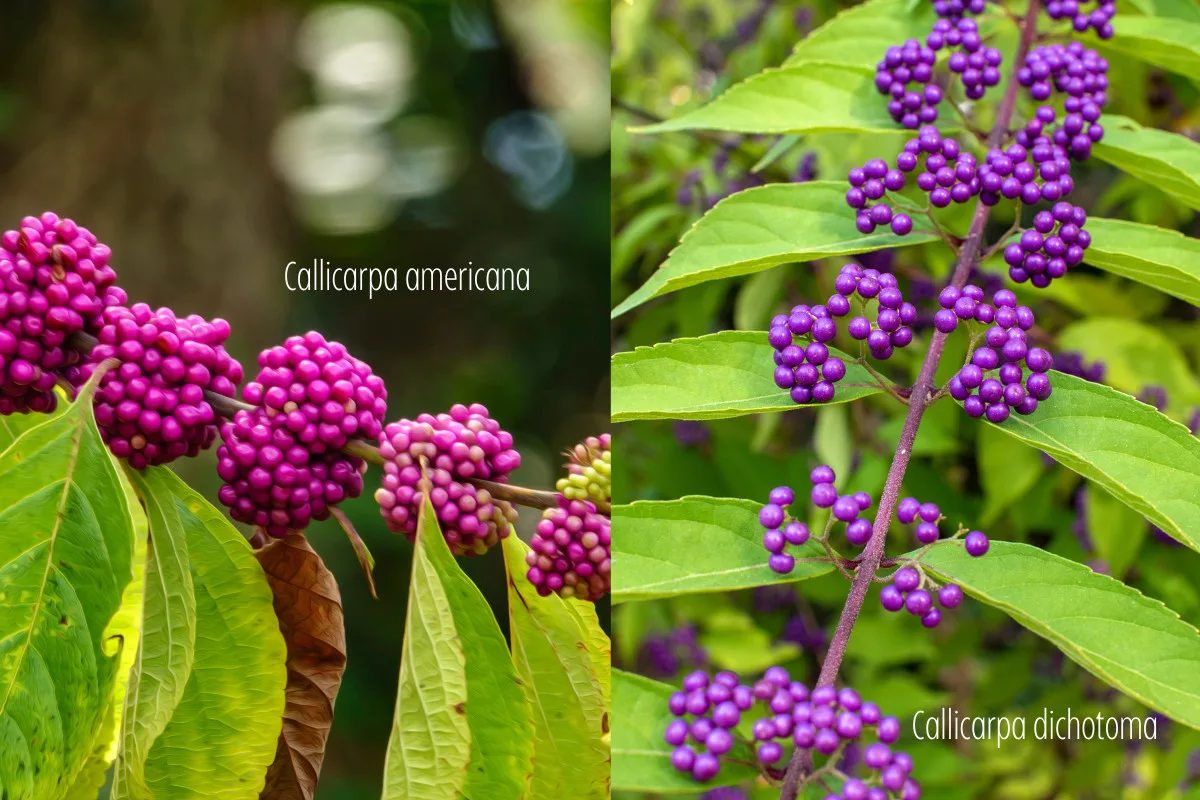
The Asian variety has a ‘weeping’ appearance in the way the branches grow. (I photographed the Asian variety.) The berries, which are sweeter than the American variety, also grow in a cluster from a small stem attached to the main branch.
4. Perfect for Adding Fall Color to Your Landscape
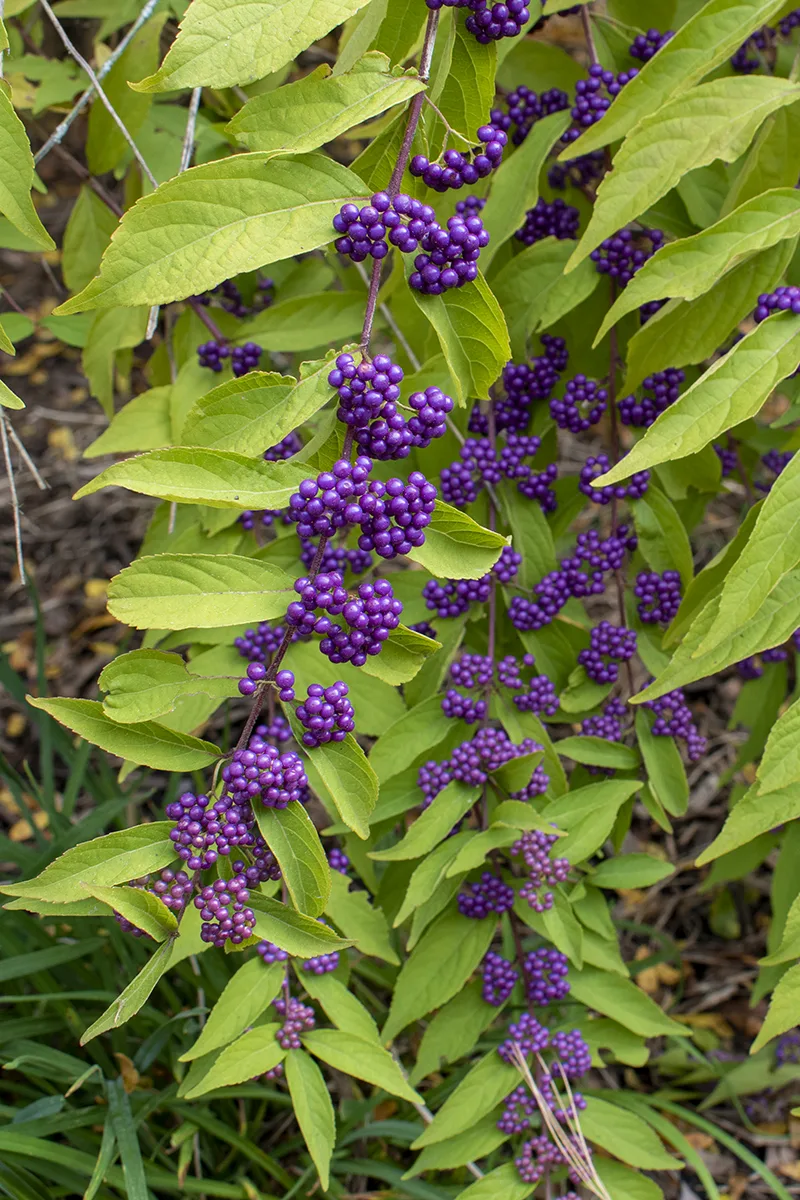
When choosing plants for our gardens and landscapes, much of the focus often goes on what will be blooming in the spring and summer. But when fall comes along, these areas can suddenly look dull and lifeless as many of our perennials start to go dormant for the season, or annuals are beginning to die off.
Around this time, the beautyberry shines, as fall is when the glorious display of purple berries clustered along its branches begins. The berries will last well into the winter too. Move over, mums; there’s a new fall beauty in town.
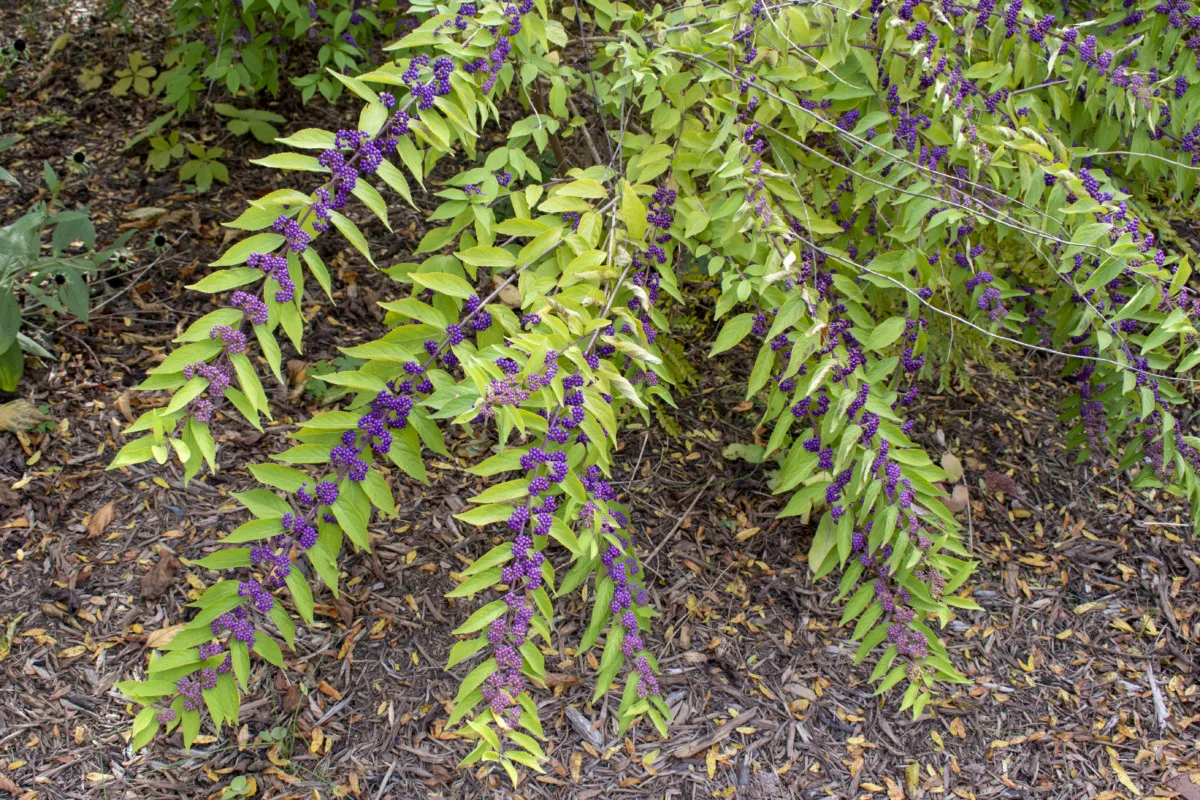
5. Pollinators
If you’re growing a pollinator garden, don’t forget to add a few beautyberry bushes. While the flowers aren’t necessarily anything special to look at, they attract a host of native pollinators. Those dense clusters of flowers can feed an army of pollinators and do.
In the summer, you often hear an audible hum of activity coming from the branches. With the overall decline in insect populations, specifically pollinators, everything we can do to help makes a difference. Native bees and butterflies will appreciate the nectar you provide, but this plant is also great for other wild backyard friends.
6. Beautyberry is Perfect for Attracting Songbirds to Your Yard
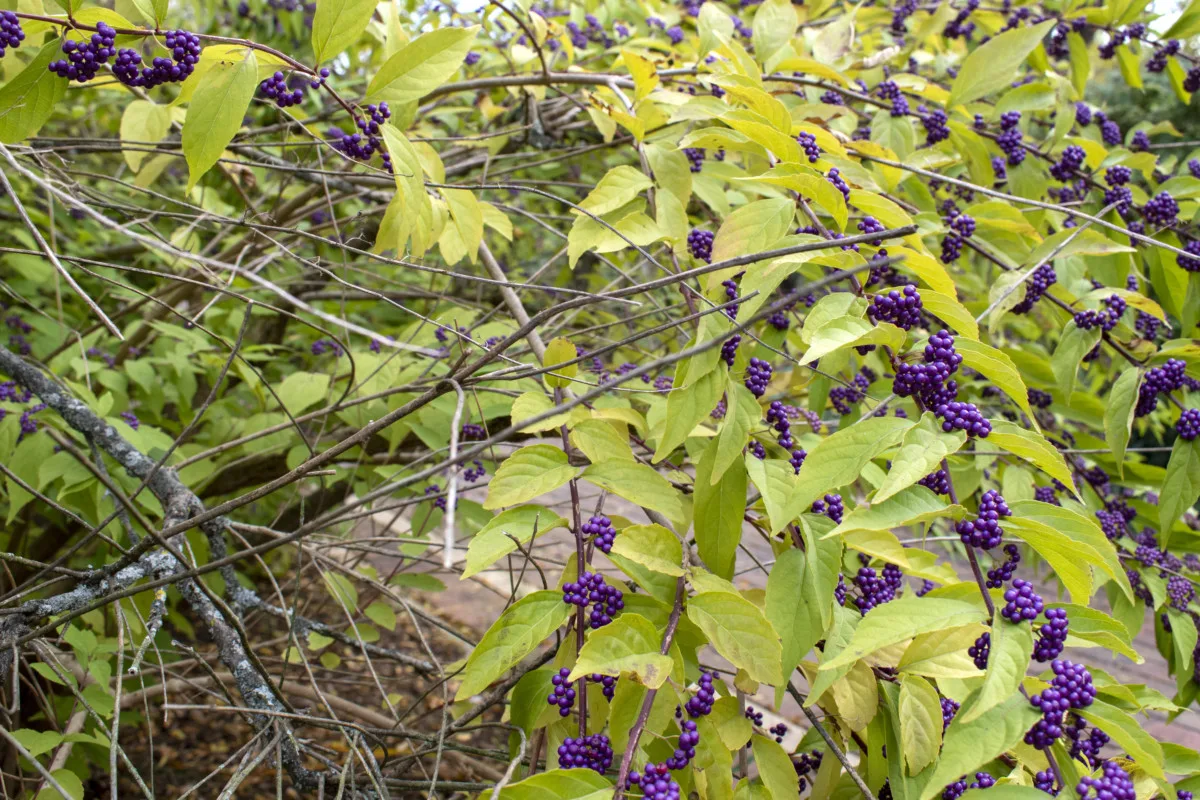
Many of us fell in love with bird watching during the pandemic. And our obsession continues by hanging feeders and adding plants to our landscape to attract birds to our backyards. Beautyberry is an obvious choice for the avid backyard birder.
What makes it great is that the birds usually wait and eat other food sources first, saving the beautyberry until later in the winter. So, you still get to enjoy the gorgeous purple berries during the fall and even after the snow falls, and the birds still have something to eat in the dead of winter.
Giving your feathered friends access to a natural, native food supply is far better for them than the commercial seed mixes that are so popular. Not to mention it’s cheaper for you.
7. You Can Eat Those Pretty Berries
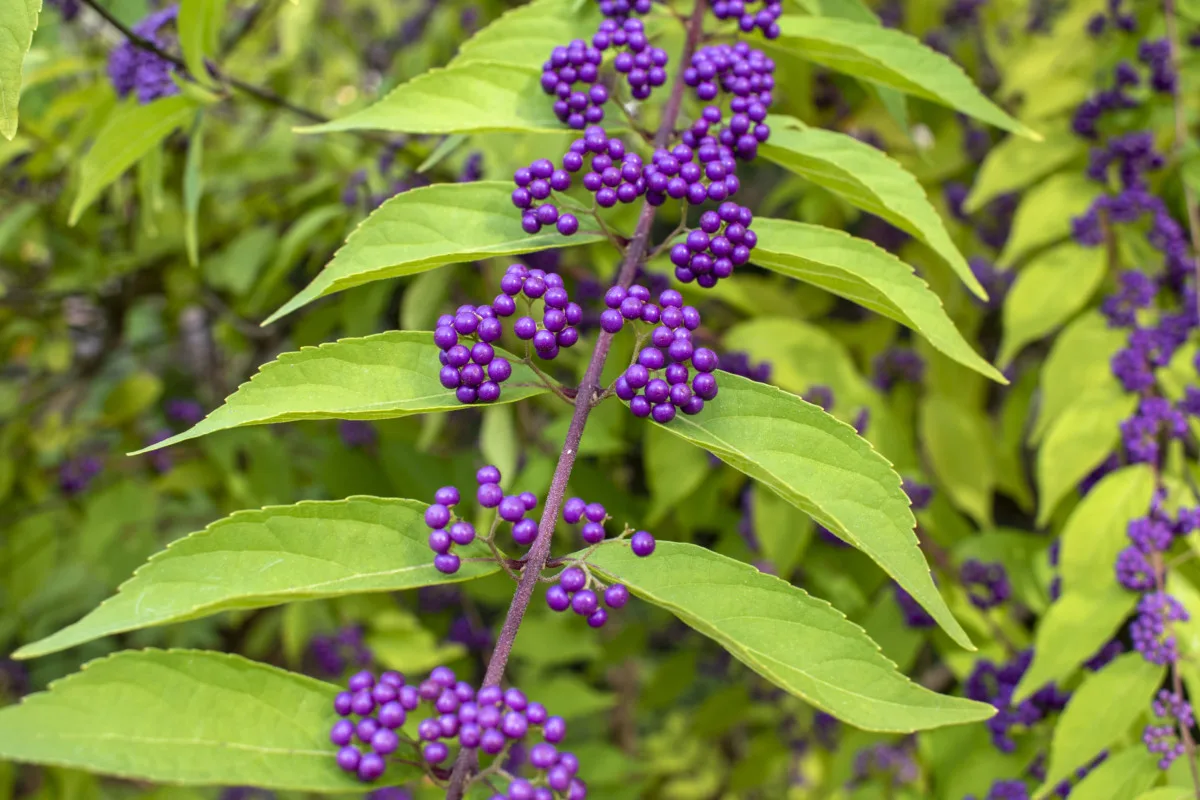
Looking at such a shocking purple, one would think that beautyberries are poisonous. While photographing the bushes for this article, I was stopped three times by people wanting to know what the shrub was and whether it was poisonous.
I told them, “No, in fact, it makes a pretty tasty jam.”
Like many berries, though, eating too many raw can leave you with an upset stomach. Beautyberry shines once it has been cooked into jams, shrubs, pies and even mead.
8. It’s a Natural and Effective Bug Repellant
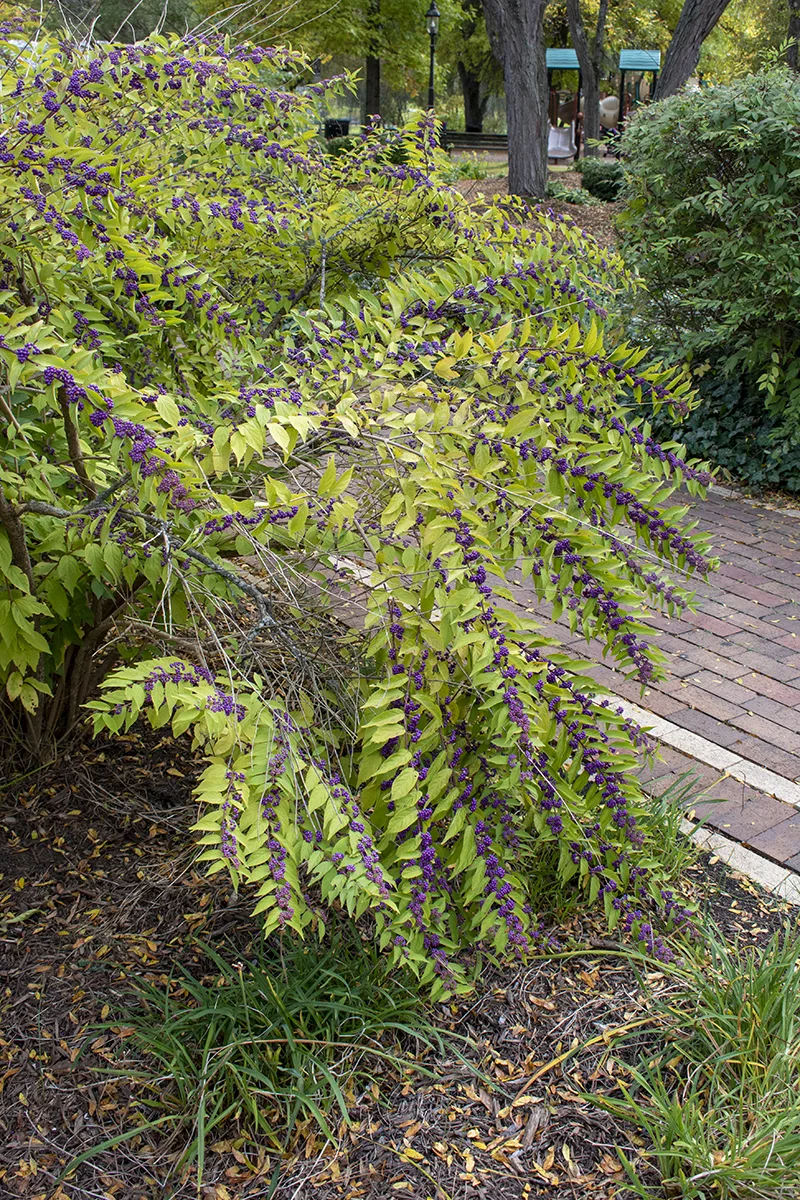
Beautyberry leaves contain a substance called callicarpenol, studied by the University of Mississippi as a natural bug repellent. It’s said to repel mosquitoes, ticks and ants. It’s even said to be as effective in repelling insects as DEET.
In a pinch, you can rub some of the leaves on your skin. But there are quite a few recipes for natural bug repellant that are easy to make.
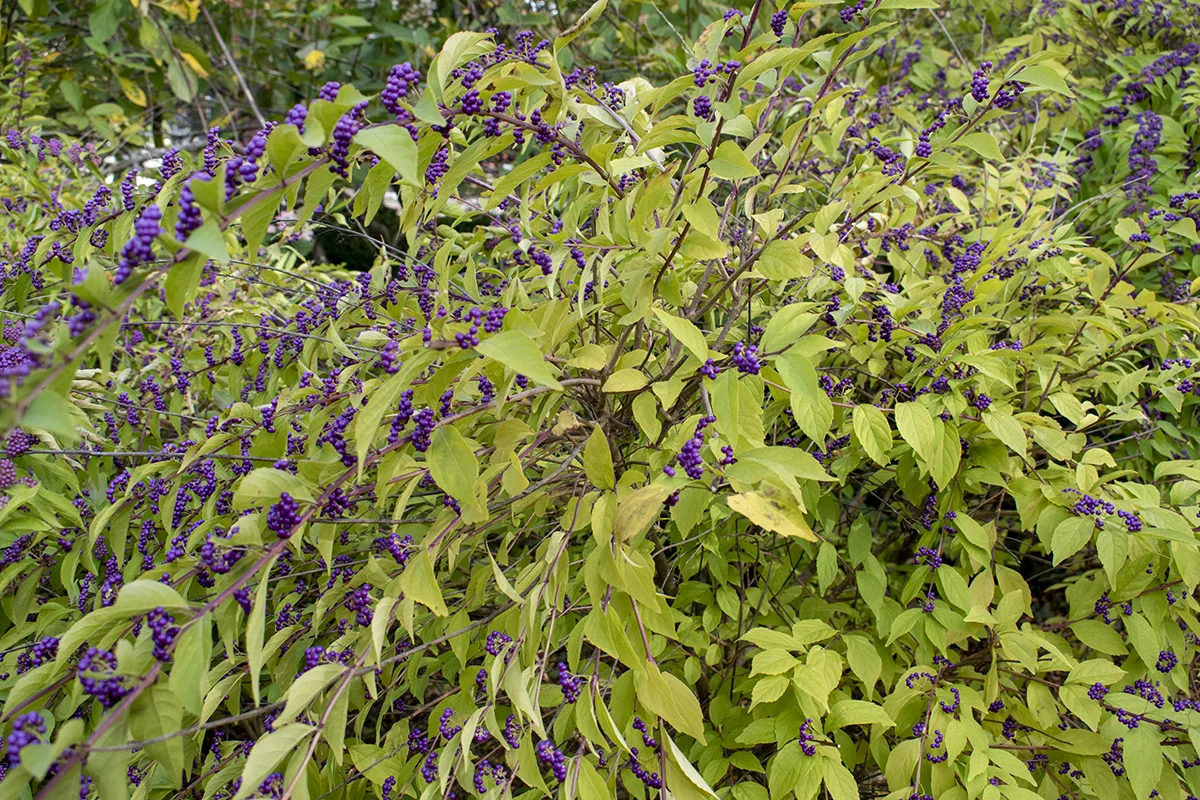
Read Next: How To Grow Beautyberry From Cuttings

Get the famous Rural Sprout newsletter delivered to your inbox.
Including Sunday ramblings from our editor, Tracey, as well as “What’s Up Wednesday” our roundup of what’s in season and new article updates and alerts.

